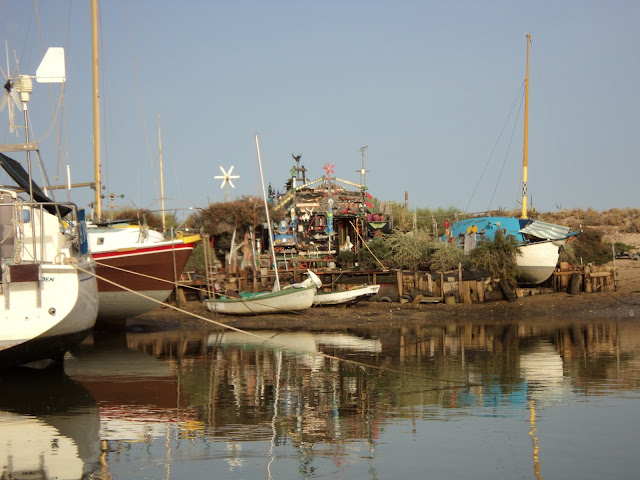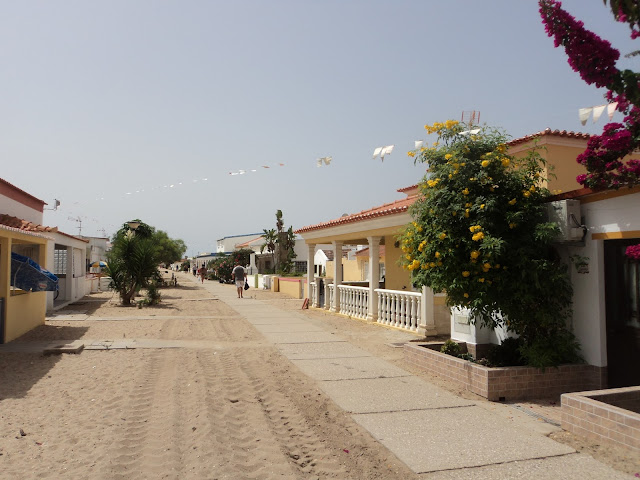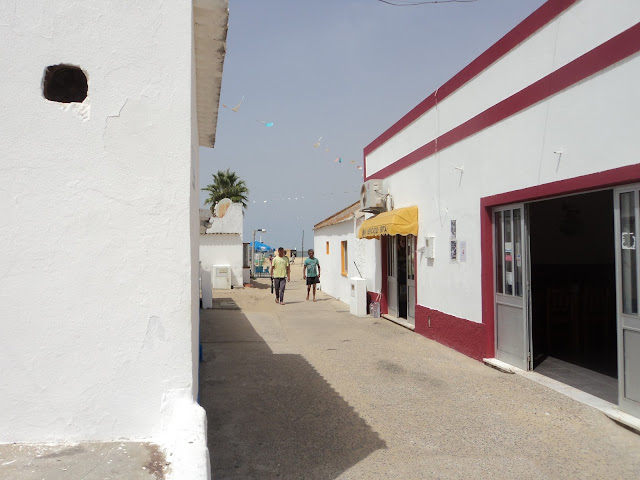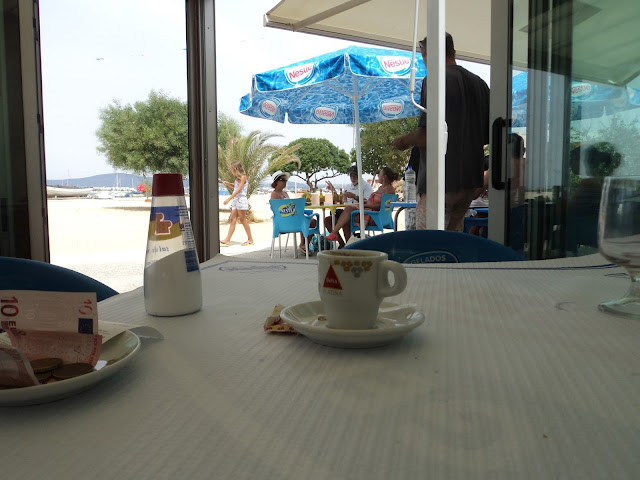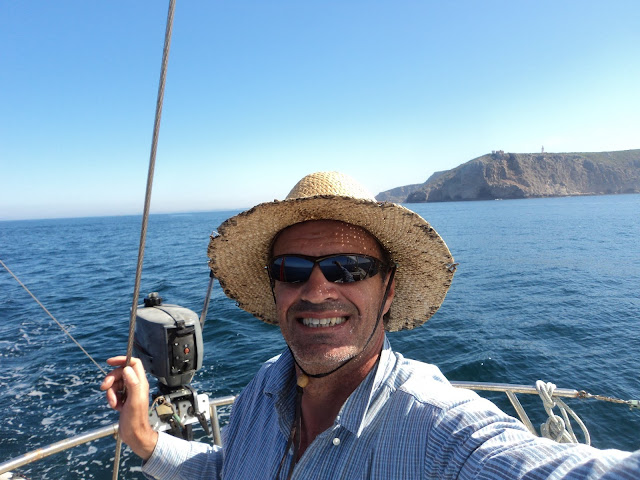Culatra has a shallow lagoon where low draft boats come to rest or, in many cases, to rot. The place has become a community of eccentric transients. But in this case the owners are the transients, not the boats that mostly stay here year-round baking in the hot sun.
There's a sort of community club (shown in the center below) and the most amazing art exhibit that, along with the old Danish artist, has been featured in many magazine articles.
Two years ago I had a long talk with him and he confided that newcomers were polluting the place with stress. "First it was a satellite dish, a generator and a TV, now it's WiFi. Then they get all stressed because these things don't work properly or break down. People create stress for themselves," he said ruefully.
He also showed me his pet octopus he kept in a cage in the water. I remember thinking that keeping an octopus caged didn't fit with his character.
This year I was on a kayak and didn't go ashore, but from the look of his studio shack (as shown further down) overflowing with art pieces hanging on the wall it's evident that he's still here.
I tend to see these "sailors/campers" as the disciples of Henry David Thoreau. But I may be wrong because I met one Italian owner of a Warren-design catamaran and he is a psychiatrist who visits his beached boat on and off. Actually it's for sale. And what's even more amazing, he built most of it in Peniche by himself. Ain't this world full of characters, or what?
 |
| The clubhouse. |
 |
| This "sailor" even has a lawn. Now, this is weird. We had houseboats, now we also have landboats. |
 |
| My cheap camera and photographic skills don't do this place justice - believe me this is another world and people are living another life here. |
 |
| This guy got stuck in the middle of Walden Pond. He definitively doesn't need a Rocna anchor. |
 |
| Notice the gaping hole in the leaning boat. |
 |
| This is a local shack near the entrance. |
